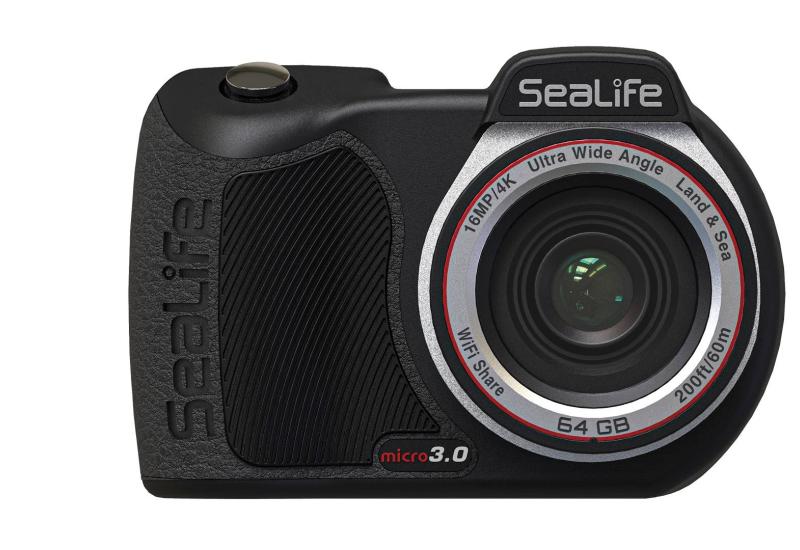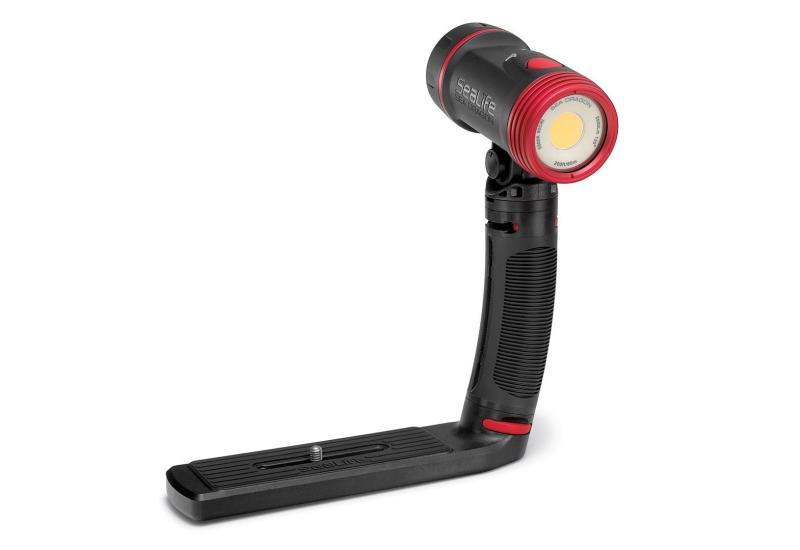ScubaLab: Underwater Camera Systems

It’s been said that just about anybody can go down and capture great images with the underwater camera systems available today. Does that include a team of divers accustomed to testing traditional dive gear? A few weeks after putting out a call to manufacturers of photo equipment, we stood in the back room of ScubaLab’s shop surrounded by boxes of camera gear. Joining us were San Francisco-based underwater photographer Abi Smigel as well as Ty Sawyer, Scuba Diving’s editorial director and a well-known photographer. They unpacked cameras and housings, strobes and arms, and assembled eight photo systems. With those eight in hand, we met our test team — with photo expertise ranging from the most basic happy snapper to the near professional — at Body Glove’s dive boat Disappearance in Redondo Beach. For two days divers braved cold water and limited visibility in the kelp beds as they took these camera systems through their paces.
| August 2010 Issue Scuba Lab Review Quick Links |
|---|
| Optical Cameras |
| --- |
| Canon Powershot D10| Fisheye Fix for the Canon G11 |
| Fisheye Fix for the Canon S90| Sea&Sea; DX-2G |
| Bonica for the Sony T90| |
| Micro Four-Thirds Camera |
| --- |
| Olympus PT-EP01 for the E-PL1 |
| Digital SLR Cameras |
| --- |
| Ikelite for the Nikon D90| Nauticam for the Canon 7D |
How We Tested
A camera rig is a much different animal than a reg or a BC, requiring a different test strategy. Rather than running all camera systems through a litany of exercises shared by the entire test team while collecting a pile of data points (as is done on most ScubaLab gear tests), this time we matched each camera to the appropriate test diver based on his or her underwater photo experience level. That way, the simplest system went to our least experienced photographer, the most complex system to our most experienced photographer and so on. Most divers used each of their assigned camera setups for one full day of diving; those with more complex systems used them for two days. Between dives and during surface intervals, Sawyer and Smigel stood at the ready to answer questions, help adjust strobes, change batteries and offer technical assistance. Divers filled out worksheets and made notes, then wrote up reports on their experiences with their respective systems. These reports, along with more-technical data offered up by the pros, are found in the following reviews.
Choosing the Right System
Even today’s most basic cameras come packed with features, and the really sophisticated single-lens reflex cameras come with so many user-adjustable functions, you’ll likely never figure them all out before you need to upgrade. So we narrowed down the list to a few key specs that you’ll want to be aware of when looking to first purchase a camera, before moving on to the housing.
Key Tech Specs
Sensor -- With sensors, size matters — not so much megapixels but actual, physical size. A basic 12 megapixel point-and-shoot will likely have a much smaller sensor size than a high-end pro SLR. The density of megapixel per square centimeter makes a great deal of difference: Less acreage means less opportunity to gather information.
Image Size -- Big enough to blow up and put on your wall, or small enough to do the job without taking up much space on the Web.
Sensitivity -- The bigger the number, the less light you’ll need to capture the image without a strobe.
Image File Formats -- Pros want RAW because it has the most information to manipulate; JPEG is an industry standard, and they vary from fine (lots of information in the image) to basic (less information in the image).
Auto Focus -- How the camera sees the subject, light and shadows. Then, how fast it can focus and make the subject sharp.
White Balance -- Proper white balance makes your image look more like you see it with your eye.
Weight -- So you know just how much extra you’ll be putting in your carry-on.
Monitor -- The small image display on the back of the camera. How good it looks, and how big it is.
Zoom -- A good underwater photographer should always ignore the zoom — your fins are your zoom lens. But it’ll be useful above water. Optical zoom is always better than digital zoom.
Video Mode -- The quality of video you can expect. Not all camera systems have this as a feature.
Special Features -- What makes the camera stand out in a crowd?

It’s been said that just about anybody can go down and capture great images with the underwater camera systems available today. Does that include a team of divers accustomed to testing traditional dive gear? A few weeks after putting out a call to manufacturers of photo equipment, we stood in the back room of ScubaLab’s shop surrounded by boxes of camera gear. Joining us were San Francisco-based underwater photographer Abi Smigel as well as Ty Sawyer, Scuba Diving’s editorial director and a well-known photographer. They unpacked cameras and housings, strobes and arms, and assembled eight photo systems. With those eight in hand, we met our test team — with photo expertise ranging from the most basic happy snapper to the near professional — at Body Glove’s dive boat Disappearance in Redondo Beach. For two days divers braved cold water and limited visibility in the kelp beds as they took these camera systems through their paces.
| August 2010 Issue Scuba Lab Review Quick Links |
|---|
| Optical Cameras |
| --- |
| Canon Powershot D10| Fisheye Fix for the Canon G11 |
| Fisheye Fix for the Canon S90| Sea&Sea; DX-2G |
| Bonica for the Sony T90| |
| Micro Four-Thirds Camera |
| --- |
| Olympus PT-EP01 for the E-PL1| |
| Digital SLR Cameras |
| --- |
| Ikelite for the Nikon D90| Nauticam for the Canon 7D |
How We Tested
A camera rig is a much different animal than a reg or a BC, requiring a different test strategy. Rather than running all camera systems through a litany of exercises shared by the entire test team while collecting a pile of data points (as is done on most ScubaLab gear tests), this time we matched each camera to the appropriate test diver based on his or her underwater photo experience level. That way, the simplest system went to our least experienced photographer, the most complex system to our most experienced photographer and so on. Most divers used each of their assigned camera setups for one full day of diving; those with more complex systems used them for two days. Between dives and during surface intervals, Sawyer and Smigel stood at the ready to answer questions, help adjust strobes, change batteries and offer technical assistance. Divers filled out worksheets and made notes, then wrote up reports on their experiences with their respective systems. These reports, along with more-technical data offered up by the pros, are found in the following reviews.
Choosing the Right System
Even today’s most basic cameras come packed with features, and the really sophisticated single-lens reflex cameras come with so many user-adjustable functions, you’ll likely never figure them all out before you need to upgrade. So we narrowed down the list to a few key specs that you’ll want to be aware of when looking to first purchase a camera, before moving on to the housing.
Key Tech Specs
Sensor -- With sensors, size matters — not so much megapixels but actual, physical size. A basic 12 megapixel point-and-shoot will likely have a much smaller sensor size than a high-end pro SLR. The density of megapixel per square centimeter makes a great deal of difference: Less acreage means less opportunity to gather information.
Image Size -- Big enough to blow up and put on your wall, or small enough to do the job without taking up much space on the Web.
Sensitivity -- The bigger the number, the less light you’ll need to capture the image without a strobe.
Image File Formats -- Pros want RAW because it has the most information to manipulate; JPEG is an industry standard, and they vary from fine (lots of information in the image) to basic (less information in the image).
Auto Focus -- How the camera sees the subject, light and shadows. Then, how fast it can focus and make the subject sharp.
White Balance -- Proper white balance makes your image look more like you see it with your eye.
Weight -- So you know just how much extra you’ll be putting in your carry-on.
Monitor -- The small image display on the back of the camera. How good it looks, and how big it is.
Zoom -- A good underwater photographer should always ignore the zoom — your fins are your zoom lens. But it’ll be useful above water. Optical zoom is always better than digital zoom.
Video Mode -- The quality of video you can expect. Not all camera systems have this as a feature.
Special Features -- What makes the camera stand out in a crowd?










